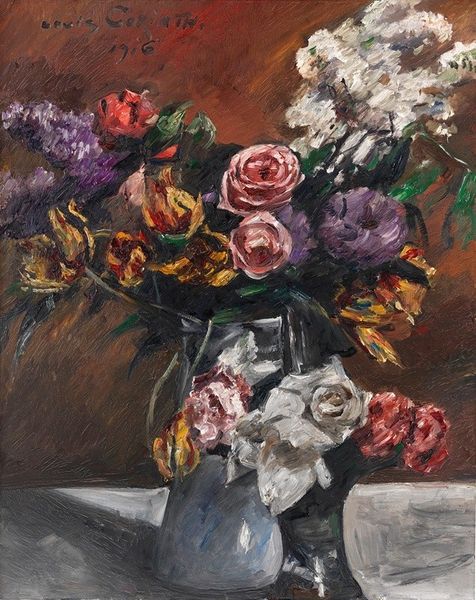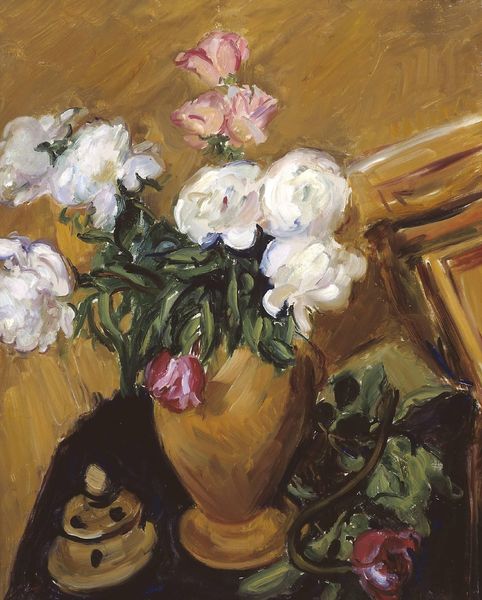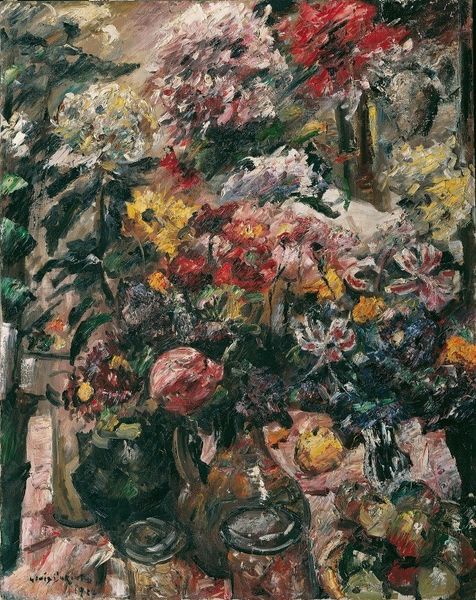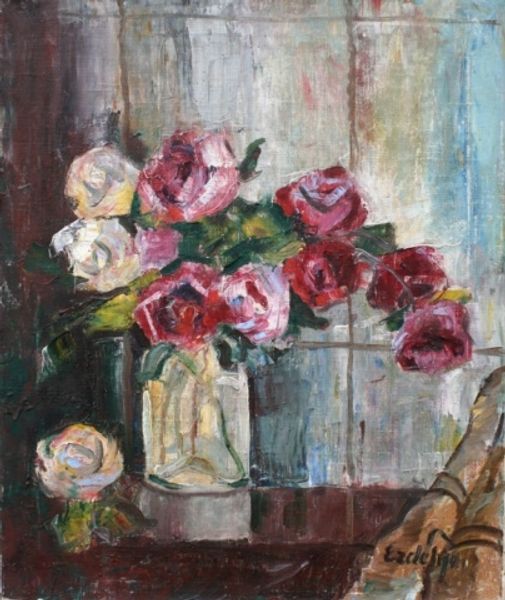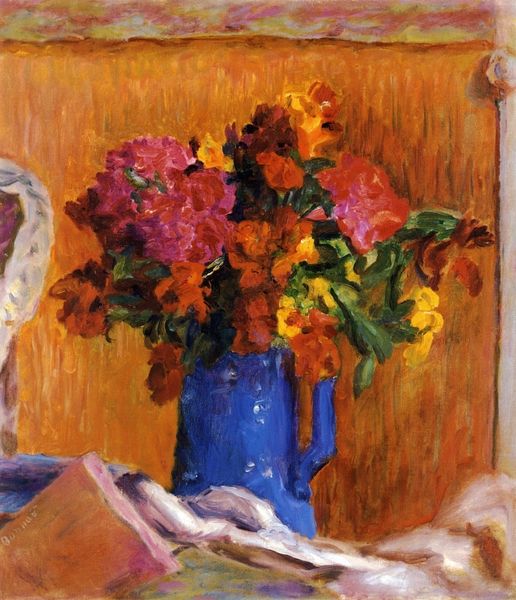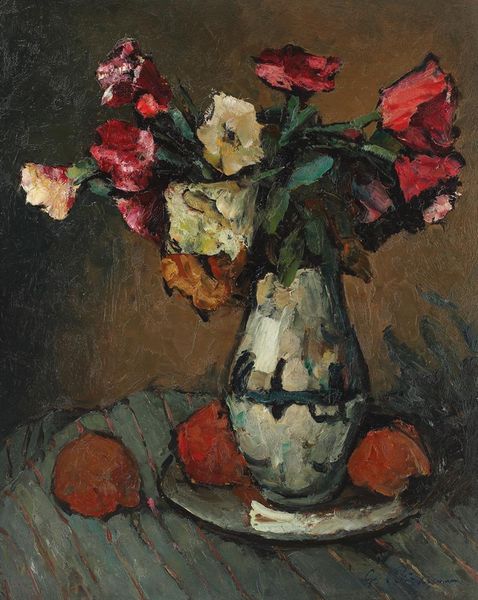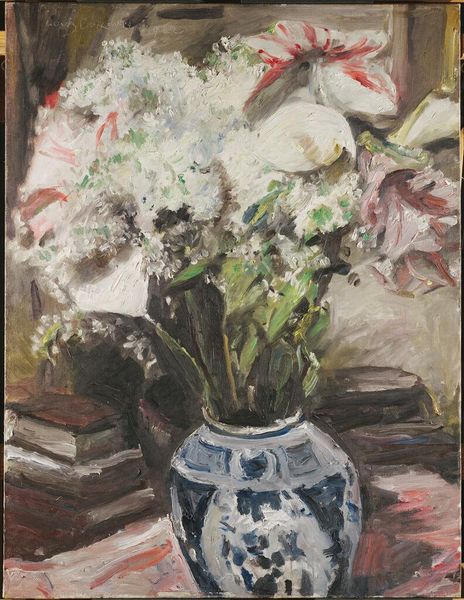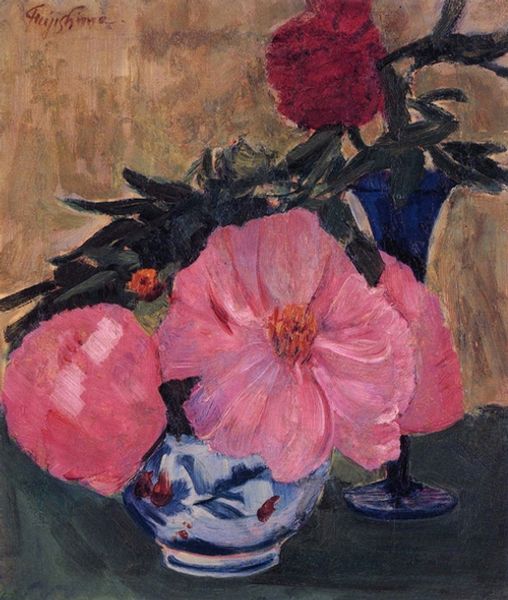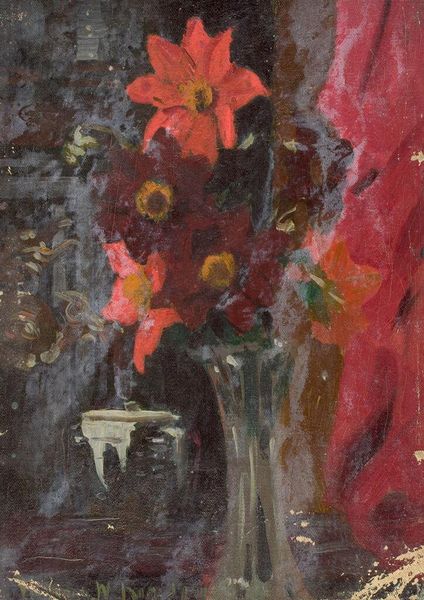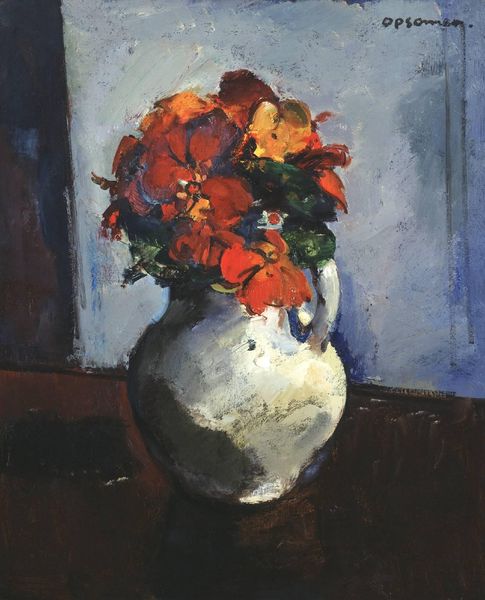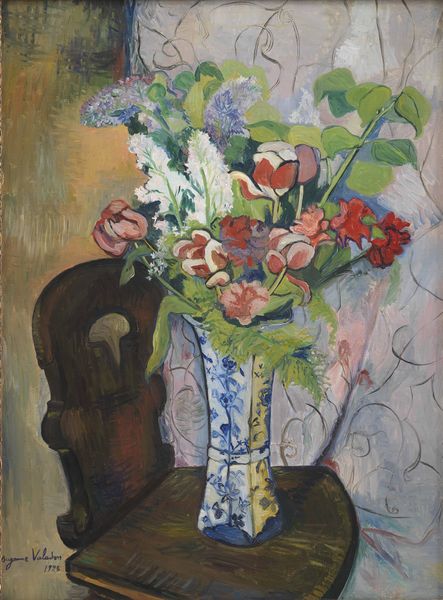
painting, oil-paint
#
painting
#
oil-paint
#
german-expressionism
#
oil painting
#
expressionism
#
expressionist
Copyright: Public Domain: Artvee
Editor: This is Lovis Corinth's "Chrysanthemen Und Rosen Im Krug," painted in 1917. The impasto is so thick; you can really see the texture of the oil paint. It's a really vigorous, almost brutal application of material, which contradicts the gentle subject matter. What stands out to you about this piece? Curator: Well, immediately, I'm struck by the material reality of war-time scarcity during World War I. Consider the availability, the labor, and even the expense involved in acquiring the paint itself. These materials weren't neutral; their presence speaks volumes about class and access amidst societal hardship. Editor: So, you're saying the flowers themselves are less important than the story the materials tell? Curator: Not entirely. Corinth, known for his expressive brushwork, seemingly revels in the sheer physicality of applying the paint. The clashing pinks and purples, fighting for space on the canvas – isn’t there a reflection of social discord in this struggle? Editor: That makes me see it differently. Before, the brushstrokes seemed emotional, but maybe they also speak to the practical challenges Corinth faced, and maybe he wanted to capture these sentiments. Curator: Exactly! What about the vase itself? It’s an everyday object elevated by the artist's touch. The transition from mundane item to art object requires that it be recontextualized, making it something new. Editor: That really opens up my understanding of Expressionism in general, focusing on the raw, material elements and their relationship to historical and social forces. Thank you. Curator: Indeed, examining the materials, production and even the consumption around art encourages a richer, and dare I say more honest interpretation of Corinth's vision.
Comments
No comments
Be the first to comment and join the conversation on the ultimate creative platform.
